Week 3_ Test Your Knowledge (TYK)_ PJM 6075 WINTER 2024 PROJECT FINANCE 20736_21621
pdf
keyboard_arrow_up
School
Northeastern University *
*We aren’t endorsed by this school
Course
6075
Subject
Finance
Date
Apr 3, 2024
Type
Pages
12
Uploaded by BaronCapybara7708
3/4/24, 6:13 PM
Week 3: Test Your Knowledge (TYK): PJM 6075 WINTER 2024 PROJECT FINANCE 20736/21621
https://northeastern.instructure.com/courses/165089/quizzes/582941
1/12
Week 3: Test Your Knowledge (TYK) Due Mar 10 at 8pm
Points 20
Questions 20
Time Limit 60 Minutes
Allowed Attempts 3
Instructions
Attempt History
Attempt
Time
Score
LATEST
Attempt 1
18 minutes
16 out of 20
Score for this attempt: 16 out of 20
This practice test covers week 3 course materials, which include the project ±nance markets, capital structure and cost of
capital. Each answer key contains detailed explanations to help you master the course materials. Take notes as you learn,
because the ±nal exam will cover week 1-week 6 course materials. You can take this practice test up to three times.
Test Parameters
Logistics: Online
Number of Questions: 20
Duration: 60 minutes
Possible points: 20 points
Type of test: Open Book
Questions Type: Fill in the blank, multiple choice, multiple answer, and matching
Question Delivery: One question at a time
Multiple Attempts: You can take this test up to three times
Force Completion: Once started, this Test must be completed in one sitting.
Due date: Sunday of the Third week of the course
Learning Connection:
This Test Your Knowledge (TYK) practice test is directly linked to the following key learning outcomes from the course
syllabus:
Examine the capital structure of a project organization
Use real world case studies to apply project ±nance theories by
Calculating the cost of capital of a project company
Determining the optimal capital structure that maximizes the value of a project company
Analyzing the factors that impact a project company's dividend policy
Take the Quiz Again
3/4/24, 6:13 PM
Week 3: Test Your Knowledge (TYK): PJM 6075 WINTER 2024 PROJECT FINANCE 20736/21621
https://northeastern.instructure.com/courses/165089/quizzes/582941
2/12
Submitted Mar 4 at 9:13pm
This attempt took 18 minutes.
Question 1
1 / 1 pts
The bondholder is guaranteed an income over the life of the security.
By promising a return to the bondholder, an income bond is junior to preferred and common stock.
Income bonds are junior to subordinated debt but senior to preferred and common stock. Correct!
Income bonds pay interest only if the issuing company has earned the interest. An income bond is one that pays interest only if the issuing company has earned the interest, although
the principal must still be paid on the due date. Such bonds are riskier than normal bonds.
Question 2
1 / 1 pts
Market interest rates have increased.
Additional debt can be issued more cheaply than the original debt.
There should be no difference; cost of debt is the same as the bonds' market yield.
Correct!
Interest is deductible for tax purposes. Because interest is deductible for tax purposes, the actual cost of debt capital is the net effect of the
interest payment and the offsetting tax deduction. The actual cost of debt equals the interest rate times
(1 -the marginal tax rate). Thus, if a firm with a 9% market rate is in a 40% tax bracket, the net cost of the
debt capital is 5.4% [9% x (1 - .4)].
Question 3
1 / 1 pts
The main difference between income bonds and other bonds is that
Chenco is a project company incorporated in Hundred Acre Wood, California. If Chenco's bonds are
currently yielding 9% in the marketplace, why is Chenco's cost of debt actually lower?
3/4/24, 6:13 PM
Week 3: Test Your Knowledge (TYK): PJM 6075 WINTER 2024 PROJECT FINANCE 20736/21621
https://northeastern.instructure.com/courses/165089/quizzes/582941
3/12
Bank lender
Bondholder
Correct!
Shareholder
Non-bank lender
The term lender is used to mean either a bank lender, bondholder, non-bank lender or debt fund. The
term shareholder is used to mean the owner of shares in a company. Although the financial and legal
structures and procedures are different in the bank and the non-bank private-sector project-finance debt
market, the criteria under which debt is raised in each of these markets are much the same.
Question 4
1 / 1 pts
$22.61
$46.00
Correct!
$50.00
$53.00 The conversion price is the assumed price of the stock, which was set at the time the bonds were
issued. Dividing the $1 ,000 face value by the 20 shares results in a conversion price of $50. Answer (A)
is incorrect because it is the ratio of stock price to bond price, not the conversion price.
Question 5
1 / 1 pts
The term lender is typically used to refer to all of the following, except
Chenco's $1 ,000 par value convertible debentures are selling at $1,060 when its stock is selling for
$46.00 per share. What is the conversion price if the conversion ratio is 20?
A bond issued by a project company is aimed mainly at
Your preview ends here
Eager to read complete document? Join bartleby learn and gain access to the full version
- Access to all documents
- Unlimited textbook solutions
- 24/7 expert homework help
3/4/24, 6:13 PM
Week 3: Test Your Knowledge (TYK): PJM 6075 WINTER 2024 PROJECT FINANCE 20736/21621
https://northeastern.instructure.com/courses/165089/quizzes/582941
4/12
The banking market.
Correct!
The non-banking markets.
The equity market.
The international trading market. A bond issued by a project company is basically similar to a loan from the borrower’s point of view, but it
is aimed mainly at the non-banking market and takes the form of a tradable debt instrument, originally
evidenced by a paper certificate, but now generally superseded by electronic registration.
Question 6
1 / 1 pts
Correct!
Voting rights in corporate elections.
Dividend payments that are not tax deductible by the company.
No principal repayments.
A superior claim to common stock equity in the case of liquidation. Dividends on cumulative preferred stock accrue until declared; that is, the book value of the preferred
stock increases by the amount of any undeclared dividends. Participating preferred stock participates
with common shareholders in excess earnings of the company. In other words, 10% participating
preferred stock might pay a dividend each year greater than 10% when the corporation is extremely
profitable. Therefore, nonparticipating preferred stock will receive no more than is stated on the face of
the stock. Preferred shareholders rarely have voting rights. Voting rights are exchanged for preferences
regarding dividends and liquidation of assets.
Question 7
1 / 1 pts
Cumulative preferred stock (non-participating, 10%) in Chenco LTD that meets its dividend obligations
has all of the following characteristics, except
The market value of a share of stock is $60, and the market value of one right prior to the ex-rights date
is $2.00 after the offering is announced but while the stock is still selling rights-on. The offer to the
3/4/24, 6:13 PM
Week 3: Test Your Knowledge (TYK): PJM 6075 WINTER 2024 PROJECT FINANCE 20736/21621
https://northeastern.instructure.com/courses/165089/quizzes/582941
5/12
Correct!
Does not receive any additional benefit from the rights offering.
Receives an additional benefit from the rights offering.
Merely receives a return of capital.
Should redeem the right and purchase the stock before the ex-rights date. The formula for determining the value of one stock right when the price of the stock is rights-on is as
follows:
R
on
= (P
on
– S)/(N + 1)
Plugging the amounts into the formula for determining the value of one stock right produces a theoretical
value of $2.50 per right, which leaves a theoretical value of $47.50 for the stock:
($60- $50) ÷ (3 + 1) = $2.50. However, if the stock declines to $57.50 when the right is worth only $2, the
original investor is worse off than before the rights issuance; i.e., the investor would have only $59.50
worth of investments. Hence, the original shareholder receives no benefit from the issuance of the rights.
Question 8
1 / 1 pts
Correct!
Bonds guaranteed by insurance companies or commercial banks.
Bonds gifted to friends and family birthdays and other special occasions.
Bonds that are issued by all industry sectors, including non-profit and government agencies.
Bonds guaranteed by the issuer.
Wrapped bonds are bonds guaranteed by insurance companies or commercial banks (primarily from
European and Japanese banks rather than U.S. banks). When bonds are wrapped or guaranteed,
bondholders need to pay little attention to the background or risks of the borrower or (if relevant) the
project itself—at least theoretically—and could rely on the credit rating of the insurance company itself.
shareholder is that it will take three rights to buy an additional share of stock at a subscription price of
$50 per share. If the theoretical value of the stock when it goes ex-rights is $57.50, then the shareholder
Wrapped bonds are
3/4/24, 6:13 PM
Week 3: Test Your Knowledge (TYK): PJM 6075 WINTER 2024 PROJECT FINANCE 20736/21621
https://northeastern.instructure.com/courses/165089/quizzes/582941
6/12
This deals with the problem of private investors not having the capacity to assess the risks on individual
bond issues.
Question 9
1 / 1 pts
Correct!
A tradable debt instrument
A share owns by an investor
A stock owns by a stockholder
A debt owed to a commercial bank A bond is a long-term promise to pay a specified amount on a specified date and to pay interest at stated
intervals. A bond is a tradable debt instrument. The bondholder is the party which has lent to the project
company on the basis of a bond. This party is usually not a commercial bank. A bond issued by a project
company is basically similar to a loan from the borrower’s point of view, but it is aimed mainly at the non-
banking market and takes the form of a tradable debt instrument, originally evidenced by a paper
certificate, but now generally superseded by electronic registration.
Bonds may either be public issues (i.e. quoted on a stock exchange and—at least theoretically—quite
widely traded), or private placements, which are not quoted and are sold to a limited number of large
investors. It is possible for a private placement to take place without the intervention of an investment
bank (i.e. the Sponsors deal directly with bond lenders), although this is not common.
Question 10
0 / 1 pts
In project finance, the term bond is used to mean
On the first day of the current year, Chenco LTD issued convertible bonds with $1 ,000 par value and a
conversion ratio of 40. Which of the following should be the market price per share of the company's
common stock at the start of the year?
Your preview ends here
Eager to read complete document? Join bartleby learn and gain access to the full version
- Access to all documents
- Unlimited textbook solutions
- 24/7 expert homework help
3/4/24, 6:13 PM
Week 3: Test Your Knowledge (TYK): PJM 6075 WINTER 2024 PROJECT FINANCE 20736/21621
https://northeastern.instructure.com/courses/165089/quizzes/582941
7/12
Correct Answer
Under $25.
You Answered
$25
Between $25 and $40.
Above $40.
Question 11
1 / 1 pts
I and IV.
I and V.
Correct!
II and IV.
II and V. The excess of the price over the face value is a premium. A premium is paid because the coupon rate on
the bond is greater than the market rate of interest. In other words, because the bond is paying a higher
rate than other similar bonds, its price is bid up by investors.
Question 12
1 / 1 pts
If a $1 ,000 bond sells for $1,150, which of the following statements are true?
I. The market rate of interest is greater than the coupon rate on the bond.
II. The coupon rate on the bond is greater than the market rate of interest.
Ill. The coupon rate and the market rate are equal.
IV. The bond sells at a premium.
V. The bond sells at a discount.
The formula for calculating the value of one stock right when the price of the stock is rights-on is as
follows:
R
on = (P
on
- S)/(N + 1)
Where
3/4/24, 6:13 PM
Week 3: Test Your Knowledge (TYK): PJM 6075 WINTER 2024 PROJECT FINANCE 20736/21621
https://northeastern.instructure.com/courses/165089/quizzes/582941
8/12
$2.00
Correct!
$2.50
$10.00
$40.00 Plugging the amounts into the formula produces a theoretical value of $2.50 per right: ($50- $40) ÷ (3 +
1) = $2.50.
Question 13
0 / 1 pts
Dividends are costly, and the firm should retain earnings and issue stock dividends. Dividends are irrelevant.
You Answered
The firm should pay dividends only after investing in all investment opportunities having an expected return greater than
the cost of capital.
Correct Answer
Dividends provide information to the market.
Where: R
market value of one right when the stock is selling rights-on.
P
= market value of one share of stock with rights-on.
N = number of rights necessary to purchase one share of stock.
S = subscription price per share.
If the market price of a stock is $50 per share, the subscription price is $40 per share, and three rights
are necessary to buy an additional share of stock, the theoretical market value of one right used to buy
the stock prior to the ex-rights date is
on
= on
An active dividend policy assumes that
3/4/24, 6:13 PM
Week 3: Test Your Knowledge (TYK): PJM 6075 WINTER 2024 PROJECT FINANCE 20736/21621
https://northeastern.instructure.com/courses/165089/quizzes/582941
9/12
Question 14
1 / 1 pts
Income bonds that require interest payments only when earnings permit.
Subordinated debt and rank behind convertible bonds.
Correct!
Bonds secured by the full faith and credit worthiness of the issuing firm.
A form of lease financing similar to equipment trust certificates. Debentures are unsecured bonds. Although no assets are mortgaged as security for the bonds,
debentures are secured by the full faith and credit of the issuing firm. Debentures are a general
obligation of the borrower. Only companies with the best credit ratings can issue debentures because
only the company's credit rating and reputation secure the bonds.
Question 15
0 / 1 pts
You Answered
No more than 10% of the private activity bond’s proceeds may be used for the acquisition of real property.
No more than 95% of the private activity bond’s proceeds may be used for the acquisition of real property.
No more than 70% of the private activity bond’s proceeds may be used for the acquisition of real property.
Correct Answer
No more than 25% of the private activity bond’s proceeds may be used for the acquisition of real property.
Question 16
0 / 1 pts
In project finance, the term debenture refers to
To qualify for tax exemption, generally
The equity section of Chenco's Statement of Financial Position is presented below
Preferred stock, $100 par
$12,000,000
Common stock, $5 par
15,000,000
Your preview ends here
Eager to read complete document? Join bartleby learn and gain access to the full version
- Access to all documents
- Unlimited textbook solutions
- 24/7 expert homework help
3/4/24, 6:13 PM
Week 3: Test Your Knowledge (TYK): PJM 6075 WINTER 2024 PROJECT FINANCE 20736/21621
https://northeastern.instructure.com/courses/165089/quizzes/582941
10/12
1 ,000 additional shares.
3,774 additional shares.
Correct Answer
5,000 additional shares.
You Answered
3,333 additional shares.
Question 17
1 / 1 pts
Correct!
The yield on government debt for the same term, plus a margin for extra risk
The dividend payout to common shareholders during most recent calendar year
The yearly dividend per share divided by the earnings per share adjusted for risk
The total shareholder return of the prior year
Pricing of bonds is usually based on the yield on government debt for the same term, plus a margin for
extra risk.
Question 18
1 / 1 pts
Long-term bonds have a maturity date and must therefore be repaid in the future.
Correct!
Investors are exposed to greater risk with equity capital.
Equity capital is in greater demand than debt capital.
Paid-in capital in excess of par
18,000,000
Retained earnings
9,000,000
Net worth
$54,000,000
The common shareholders of Chenco have preemptive rights. If Chenco issues 500,000 additional
shares of common stock at $6 per share, a current holder of 30,000 shares of Chenco's common stock
must be given the option to buy
Bonds’ pricing is usually based on
It is generally costlier for a firm to finance a project with equity capital than with debt capital because
3/4/24, 6:13 PM
Week 3: Test Your Knowledge (TYK): PJM 6075 WINTER 2024 PROJECT FINANCE 20736/21621
https://northeastern.instructure.com/courses/165089/quizzes/582941
11/12
Dividends fluctuate to a greater extent than interest rates. Providers of equity capital are exposed to more risk than are lenders because the firm is not obligated to
pay them a return. Also, in case of liquidation, creditors are paid before equity investors. Thus, equity
financing is more expensive than debt because equity investors require a higher return to compensate
for the greater risk assumed.
Question 19
1 / 1 pts
All bonds in the issue mature on the same date.
The yield to maturity is the same for all bonds in the issue.
Correct!
Investors can choose the maturity that suits their financial needs.
The coupon rate on these bonds is adjusted to the maturity date. Serial bonds have staggered maturities; that is, they mature over a period (series) of years. Thus,
investors can choose the maturity date that meets their investment needs. For example, an investor who
will have a child starting college in 16 years can choose bonds that mature in 16 years.
Question 20
1 / 1 pts
The bondholder
Correct!
The issuer
The bid bonder
The bonding When using bond as a debt financing instrument, the project company is the issuer. The issuer, that is
the project company, agrees to repay to the bond holder the amount of the bond plus interest on fixed
future installment dates. Buyers of project-finance bonds are investors who require a good long-term
fixed-rate return without taking equity risk, e.g. insurance companies and pension funds, which have
matching long-term liabilities. The market for project-finance bonds is far narrower in scope than that for
Some investors like serial bonds because
When using bond as a debt financing instrument, the project company is
3/4/24, 6:13 PM
Week 3: Test Your Knowledge (TYK): PJM 6075 WINTER 2024 PROJECT FINANCE 20736/21621
https://northeastern.instructure.com/courses/165089/quizzes/582941
12/12
bank loans, but significant in certain countries. Pricing is usually based on the yield on government debt
for the same term, plus a margin for extra risk.
Quiz Score: 16 out of 20
Your preview ends here
Eager to read complete document? Join bartleby learn and gain access to the full version
- Access to all documents
- Unlimited textbook solutions
- 24/7 expert homework help
Related Documents
Related Questions
Crop a question
SIM ?
11:00 AM
A elearning.ju.edu.jo
The future value of $200 received
today and deposited at 8 percent
compounded semi-annually for
three years is
Select one:
a. $352
b. $158
C. $253
d. $380
Previous page
Next page
Quiz navigation
4.
6.
Finish attempt.
Go
Time left 0:19:14
II
arrow_forward
New tab
x
Content
x Quiz 3-MAT-143, section 03F, Fax
+
https://www.webassign.net/web/Student/Assignment-Responses/last?dep=34832472
a A ✰
DETAILS
MY NOTES
ASK YOUR TEACHE
A newspaper editor starts a retirement savings plan in which $225 per month is deposited at the beginning of each month into an account that earns an annual interest rate of 6.4% compounded monthly.
Find the value of this investment (in dollars) after 20 years. (Round your answer to the nearest cent.)
$
DETAILS
MY NOTES
ASK YOUR TEACHI
logo design company purchases four new computers for $12,500. The company finances the cost of the computers for 3 years at an annual interest rate of 5.175% compounded monthly. Find the month
ayment (in dollars) for this loan. (Round your answer to the nearest cent. See Example 8 in this section.)
Submit Assignment
Home
My Assignments
Request Extension
Copyright © 1998-2024 Cengage Learning, Inc. All Rights Reserved | TERMS OF USE PRIVACY
12:03 PM
arrow_forward
https://sfdr.owschools.com/owsoo/studentAssignment/index?eh=65534403
SSIGNMENTS
Assignment - 1. Credit Scores and Loans
Attempt 1 of 1
COURSES
SECTION 3 OF 4
QUESTION
1
4
8
You get a personal loan of $5,000 with 12% simple interest too be paid over 30 months. What is your monthly payment?
O $150.00
O $166.67
O $216.67
O $175.00
NEXT QUESTION
O ASK FOR HELP
TURN IT IN
e to search
Pause
T
H
K
B
N
M
Alt
Ct
arrow_forward
What is the answer A thru D?
arrow_forward
FMfcgxwLsmmztLTTFHnxfgtfwHRqwdvc?projector=18&messagePartld=0.3
Homework Assignment #3 Due in drop box 4/8 by 11:59 p.m.
Chapter 6
2. John Walters is comparing the cost of credit to the cash price of an item. If John makes an $80
down payment and pays $35 a month for 24 months, how much more will that amount be than
the cash price of $685?
5. A work-at-home opportunity is available in which you will receive 3 percent of the sales for
customers you refer to the company. The cost of your "franchise fee" is $600. How much would
your customers have to buy to cover the cost of this fee?
Chapter 7
7. Which mortgage would result in higher total payments?
Mortgage A: $985 a month for 30 years
Mortgage B: $780 a month for 5 years and $1,056 for 25 years
end
F12
home
prt sc
F10
F6
F7
F8
F9
F11
F3
F4
F5
%23
%
5
6
7
8
9
arrow_forward
O Odysseyware
Ô https://sfdr.owschools.com/owsoo/studentAssignment/index?eh=65534403
San Felipe Der RIO CISD- IS
JALYN GARCIA
Odysseyware
LEARN
MESSAGE
HELP
SIGN OUT
Assignment - 1. Credit Scores and Loans
Attempt 1 of 1
ASSIGNMENTS
COURSES
SECTION 3 OF 4
QUESTION 6 OF 8
1
2
4
5
>>
Match the option with the lowest monthly payment to highest monthly payment.
$12,000 loan with 1% simple
1.
lowest payment
interest over 7 years
$7,500 loan with 4% simple interest
2. second highest payment
over 5 years
$8,500 loan with 2% simple
3. third highest payment
interest over 6 years
$10,000 loan with 3% simple
4. fourth highest payment
interest over 4 years
9:19 PM
后 ENG
2/4/2021
P Type here to search
R
arrow_forward
Home Page - JagApp
Week 15 - Homework #9 (100 points) i
5
ווח
ezto.mheducation.com
←
Check my work
M Question 5 - Week 15 - Homework #9 (100 points) - Connect
Saved
+1 (415) 413-1032
O from your iPhone
On October 1, 2024, Ogneva Corporation loans one of its employees $40,000 and accepts a 12-month, 9% note receivable.
Calculate the amount of interest revenue Ogneva will recognize in 2024 and 2025.
10
points
Year
Interest
Revenue
2024
2025
eBook
Print
References
Mc
Graw
Hill
A
arrow_forward
If your answer is 41719.11 it's wrong
arrow_forward
Owso0/studentAssignment/inde
JALYN GARCIA
Odysseyware
LEARN
MESSAGE
HELP
SIGN OUT
ASSIGNMENTS
COURSES
Assignment - 3. Automobile Loans
Attempt 1 of 1
SECTION 2 OF 4
QUESTION 3 OF 6
2
4
>>
John takes a car loan for $18,000. The loan is for 36 months and has an interest rate of 2.5%. There are additional $500
of fees. What is the APR for this loan?
O 2.5%
O 4.5%
O 5.3%
O 9.5%
TURN IT IN
NEXT QUESTION
READ NEXT SECTION
O ASK FOR HELP
1121 PM
G 10 ENG
2/6/2021
P Type here to search
7
8
3
P
T.
arrow_forward
PowerSchool Leaming : Portal : D
A ANet Online
4DC
a login.achievementnetwork.org/tutti/learn/assignments/viewAssignment.svc?ciid3FE954372A54D406885C1144055..
A1 Math Algebra II 20-21 Form MT Online
Screen Settings
9 of 9
* Full Screen
I Sa
Main Street Bank has savings accounts that earn 0.8% interest per month. All deposits, interest payments, and account closures are processed on the first day of a month
Part A
Assume a customer deposits the same amount of money, x, in dollars, each month. Write an expression that can be used to determine how much money would be in a savings account from Main
Street Bank after n months.
Respond in the space provided.
Part B
Luciana and Valerie are both opening savings accounts at Main Street Bank and will close their savings accounts at the end of their savings strategy Luciana's savings strategy is to deposit $200
each month for 24 months. Valerie's savings strategy is to deposit $400 each month for 12 months.
Whose savings strategy will result in…
arrow_forward
c
arrow_forward
= Homework: Homework 3
Using the simple interest formula, determine the number of days until $1256.00 will earn $22.14 interest at 8-% p.a.
The number of days required is
(Round up the final answer to the nearest day as needed. Round all intermediate values to six decimal places as needed.)
arrow_forward
111
mework
Due in a day
OCT
g5
app.tophat.com
C
Top Hat LT11.3
GBUS 10 16-Weeks Online Fall 2024 - Ass...
GBUS 10 16-Week
Fill in the Blanks
Type your answers in all of the blanks and submit
X₂ X²
Ω
e
2/5 answere
You and your cousin are both 25. Beginning at age 25, you invest $2,000 per year for ten years and then never invests another
penny. Your cousin waits ten years and then invests $2,000 per year for the next 30 years. Assuming you both earn 7 percent, how
much will each of you have at age 65?
You:
Type your answer here
Your Cousin: Type your answer here
Round to the nearest cent. DO NOT INCLUDE COMMAS OR $.
Unanswered. 3 attempts left
5.4
F5
F4
F6
A
ZOOM
POF
Submit
Cha
Mark as: None
A
ཌ
DII
A
F7
F8
F9
F10
F11
F12
arrow_forward
answer for 9
arrow_forward
Odysseyware
LEARN
MESSAGE
HELP
SIGN OUT
ASSIGNMENTS
COURSES
Assignment -3. Automobile Loans
Attempt 1 of 1
SECTION 4 OF 4
QUESTION 6 OF 6
1
2
3
4
>>
Mark takes out a loan for $20,000. The loan has 2% interest rate and a 2.5% APR. Complete the following statement.
The sum of the interest plus fees on this loan is
$900
$500
$600
400
TURN IT IN
O ASK FOR HELP
1124 PM
SUBMIT ANSWER
40ENG
2/6/2021
P Type here to search
Delete
144
BackncRce
&
%
#3
8
7
2
3
4
P
Y
U
arrow_forward
16% D Fri
le
Edit View History Bookmarks Window Help
A education.wiley.com
W https://msroederbhs.weebly.com/uploads/2/2/4/0/=
NWP Assessment Player UI Application
- Quiz 2
-/3 E
Question 9 of 10 <
View Policies
Current Attempt in Progress
At August 31, Coffman Company has this bank information: cash balance per bank $6,450; outstanding checks $2,762; deposits in
transit $1,700; and a bank service charge $20.
Determine the adjusted cash balance per bank at August 31, 2021.
Adjusted cash balance per bank
2$
Attempts: 0 of 1 used
Submit Answer
Save for Later
7.288
MAR
4
étv
P.
Maclook A
000
80
DII
DD
F1
F2
F3
F4
F5
F6
F7
F8
F9
F10
@
#
$
%
A
&
*
2
3
5
6
8
arrow_forward
CR Business Mathematics Section 2CR / Simple Interest / Lesson 63
#
7. A 180-day simple interest loan in the amount of $16, 400 will be paid in full in the amount of $16, 851. Find the interest rate of the loan. Use the banker's method, which uses 360 days in a year.
All ch
OR=5.5%
OR=6.0%
OR=4.5%
OR=5.0%
Type here to search
F4
O
2:
F5
01
F6
DELL
F7
FB
F9
F10
PREVIOUS
7 of 18
Amberly
as20157
F12
NEXT
184&
10
5/
arrow_forward
SEE MORE QUESTIONS
Recommended textbooks for you

Essentials Of Investments
Finance
ISBN:9781260013924
Author:Bodie, Zvi, Kane, Alex, MARCUS, Alan J.
Publisher:Mcgraw-hill Education,
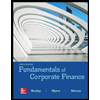
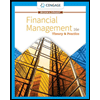
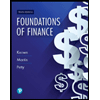
Foundations Of Finance
Finance
ISBN:9780134897264
Author:KEOWN, Arthur J., Martin, John D., PETTY, J. William
Publisher:Pearson,
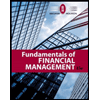
Fundamentals of Financial Management (MindTap Cou...
Finance
ISBN:9781337395250
Author:Eugene F. Brigham, Joel F. Houston
Publisher:Cengage Learning
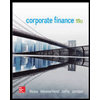
Corporate Finance (The Mcgraw-hill/Irwin Series i...
Finance
ISBN:9780077861759
Author:Stephen A. Ross Franco Modigliani Professor of Financial Economics Professor, Randolph W Westerfield Robert R. Dockson Deans Chair in Bus. Admin., Jeffrey Jaffe, Bradford D Jordan Professor
Publisher:McGraw-Hill Education
Related Questions
- Crop a question SIM ? 11:00 AM A elearning.ju.edu.jo The future value of $200 received today and deposited at 8 percent compounded semi-annually for three years is Select one: a. $352 b. $158 C. $253 d. $380 Previous page Next page Quiz navigation 4. 6. Finish attempt. Go Time left 0:19:14 IIarrow_forwardNew tab x Content x Quiz 3-MAT-143, section 03F, Fax + https://www.webassign.net/web/Student/Assignment-Responses/last?dep=34832472 a A ✰ DETAILS MY NOTES ASK YOUR TEACHE A newspaper editor starts a retirement savings plan in which $225 per month is deposited at the beginning of each month into an account that earns an annual interest rate of 6.4% compounded monthly. Find the value of this investment (in dollars) after 20 years. (Round your answer to the nearest cent.) $ DETAILS MY NOTES ASK YOUR TEACHI logo design company purchases four new computers for $12,500. The company finances the cost of the computers for 3 years at an annual interest rate of 5.175% compounded monthly. Find the month ayment (in dollars) for this loan. (Round your answer to the nearest cent. See Example 8 in this section.) Submit Assignment Home My Assignments Request Extension Copyright © 1998-2024 Cengage Learning, Inc. All Rights Reserved | TERMS OF USE PRIVACY 12:03 PMarrow_forwardhttps://sfdr.owschools.com/owsoo/studentAssignment/index?eh=65534403 SSIGNMENTS Assignment - 1. Credit Scores and Loans Attempt 1 of 1 COURSES SECTION 3 OF 4 QUESTION 1 4 8 You get a personal loan of $5,000 with 12% simple interest too be paid over 30 months. What is your monthly payment? O $150.00 O $166.67 O $216.67 O $175.00 NEXT QUESTION O ASK FOR HELP TURN IT IN e to search Pause T H K B N M Alt Ctarrow_forward
- What is the answer A thru D?arrow_forwardFMfcgxwLsmmztLTTFHnxfgtfwHRqwdvc?projector=18&messagePartld=0.3 Homework Assignment #3 Due in drop box 4/8 by 11:59 p.m. Chapter 6 2. John Walters is comparing the cost of credit to the cash price of an item. If John makes an $80 down payment and pays $35 a month for 24 months, how much more will that amount be than the cash price of $685? 5. A work-at-home opportunity is available in which you will receive 3 percent of the sales for customers you refer to the company. The cost of your "franchise fee" is $600. How much would your customers have to buy to cover the cost of this fee? Chapter 7 7. Which mortgage would result in higher total payments? Mortgage A: $985 a month for 30 years Mortgage B: $780 a month for 5 years and $1,056 for 25 years end F12 home prt sc F10 F6 F7 F8 F9 F11 F3 F4 F5 %23 % 5 6 7 8 9arrow_forwardO Odysseyware Ô https://sfdr.owschools.com/owsoo/studentAssignment/index?eh=65534403 San Felipe Der RIO CISD- IS JALYN GARCIA Odysseyware LEARN MESSAGE HELP SIGN OUT Assignment - 1. Credit Scores and Loans Attempt 1 of 1 ASSIGNMENTS COURSES SECTION 3 OF 4 QUESTION 6 OF 8 1 2 4 5 >> Match the option with the lowest monthly payment to highest monthly payment. $12,000 loan with 1% simple 1. lowest payment interest over 7 years $7,500 loan with 4% simple interest 2. second highest payment over 5 years $8,500 loan with 2% simple 3. third highest payment interest over 6 years $10,000 loan with 3% simple 4. fourth highest payment interest over 4 years 9:19 PM 后 ENG 2/4/2021 P Type here to search Rarrow_forward
- Home Page - JagApp Week 15 - Homework #9 (100 points) i 5 ווח ezto.mheducation.com ← Check my work M Question 5 - Week 15 - Homework #9 (100 points) - Connect Saved +1 (415) 413-1032 O from your iPhone On October 1, 2024, Ogneva Corporation loans one of its employees $40,000 and accepts a 12-month, 9% note receivable. Calculate the amount of interest revenue Ogneva will recognize in 2024 and 2025. 10 points Year Interest Revenue 2024 2025 eBook Print References Mc Graw Hill Aarrow_forwardIf your answer is 41719.11 it's wrongarrow_forwardOwso0/studentAssignment/inde JALYN GARCIA Odysseyware LEARN MESSAGE HELP SIGN OUT ASSIGNMENTS COURSES Assignment - 3. Automobile Loans Attempt 1 of 1 SECTION 2 OF 4 QUESTION 3 OF 6 2 4 >> John takes a car loan for $18,000. The loan is for 36 months and has an interest rate of 2.5%. There are additional $500 of fees. What is the APR for this loan? O 2.5% O 4.5% O 5.3% O 9.5% TURN IT IN NEXT QUESTION READ NEXT SECTION O ASK FOR HELP 1121 PM G 10 ENG 2/6/2021 P Type here to search 7 8 3 P T.arrow_forward
- PowerSchool Leaming : Portal : D A ANet Online 4DC a login.achievementnetwork.org/tutti/learn/assignments/viewAssignment.svc?ciid3FE954372A54D406885C1144055.. A1 Math Algebra II 20-21 Form MT Online Screen Settings 9 of 9 * Full Screen I Sa Main Street Bank has savings accounts that earn 0.8% interest per month. All deposits, interest payments, and account closures are processed on the first day of a month Part A Assume a customer deposits the same amount of money, x, in dollars, each month. Write an expression that can be used to determine how much money would be in a savings account from Main Street Bank after n months. Respond in the space provided. Part B Luciana and Valerie are both opening savings accounts at Main Street Bank and will close their savings accounts at the end of their savings strategy Luciana's savings strategy is to deposit $200 each month for 24 months. Valerie's savings strategy is to deposit $400 each month for 12 months. Whose savings strategy will result in…arrow_forwardcarrow_forward= Homework: Homework 3 Using the simple interest formula, determine the number of days until $1256.00 will earn $22.14 interest at 8-% p.a. The number of days required is (Round up the final answer to the nearest day as needed. Round all intermediate values to six decimal places as needed.)arrow_forward
arrow_back_ios
SEE MORE QUESTIONS
arrow_forward_ios
Recommended textbooks for you
 Essentials Of InvestmentsFinanceISBN:9781260013924Author:Bodie, Zvi, Kane, Alex, MARCUS, Alan J.Publisher:Mcgraw-hill Education,
Essentials Of InvestmentsFinanceISBN:9781260013924Author:Bodie, Zvi, Kane, Alex, MARCUS, Alan J.Publisher:Mcgraw-hill Education,

 Foundations Of FinanceFinanceISBN:9780134897264Author:KEOWN, Arthur J., Martin, John D., PETTY, J. WilliamPublisher:Pearson,
Foundations Of FinanceFinanceISBN:9780134897264Author:KEOWN, Arthur J., Martin, John D., PETTY, J. WilliamPublisher:Pearson, Fundamentals of Financial Management (MindTap Cou...FinanceISBN:9781337395250Author:Eugene F. Brigham, Joel F. HoustonPublisher:Cengage Learning
Fundamentals of Financial Management (MindTap Cou...FinanceISBN:9781337395250Author:Eugene F. Brigham, Joel F. HoustonPublisher:Cengage Learning Corporate Finance (The Mcgraw-hill/Irwin Series i...FinanceISBN:9780077861759Author:Stephen A. Ross Franco Modigliani Professor of Financial Economics Professor, Randolph W Westerfield Robert R. Dockson Deans Chair in Bus. Admin., Jeffrey Jaffe, Bradford D Jordan ProfessorPublisher:McGraw-Hill Education
Corporate Finance (The Mcgraw-hill/Irwin Series i...FinanceISBN:9780077861759Author:Stephen A. Ross Franco Modigliani Professor of Financial Economics Professor, Randolph W Westerfield Robert R. Dockson Deans Chair in Bus. Admin., Jeffrey Jaffe, Bradford D Jordan ProfessorPublisher:McGraw-Hill Education

Essentials Of Investments
Finance
ISBN:9781260013924
Author:Bodie, Zvi, Kane, Alex, MARCUS, Alan J.
Publisher:Mcgraw-hill Education,



Foundations Of Finance
Finance
ISBN:9780134897264
Author:KEOWN, Arthur J., Martin, John D., PETTY, J. William
Publisher:Pearson,

Fundamentals of Financial Management (MindTap Cou...
Finance
ISBN:9781337395250
Author:Eugene F. Brigham, Joel F. Houston
Publisher:Cengage Learning

Corporate Finance (The Mcgraw-hill/Irwin Series i...
Finance
ISBN:9780077861759
Author:Stephen A. Ross Franco Modigliani Professor of Financial Economics Professor, Randolph W Westerfield Robert R. Dockson Deans Chair in Bus. Admin., Jeffrey Jaffe, Bradford D Jordan Professor
Publisher:McGraw-Hill Education